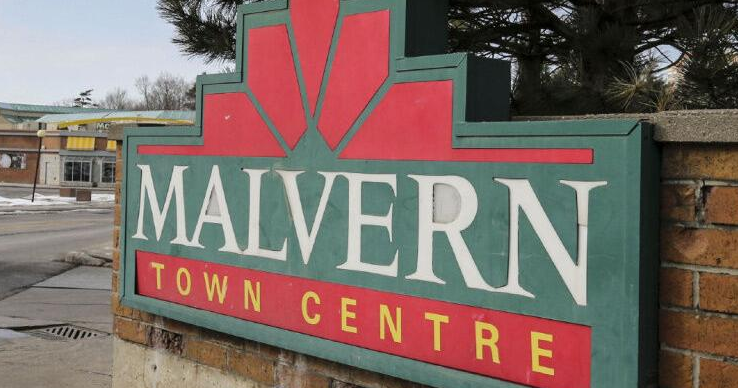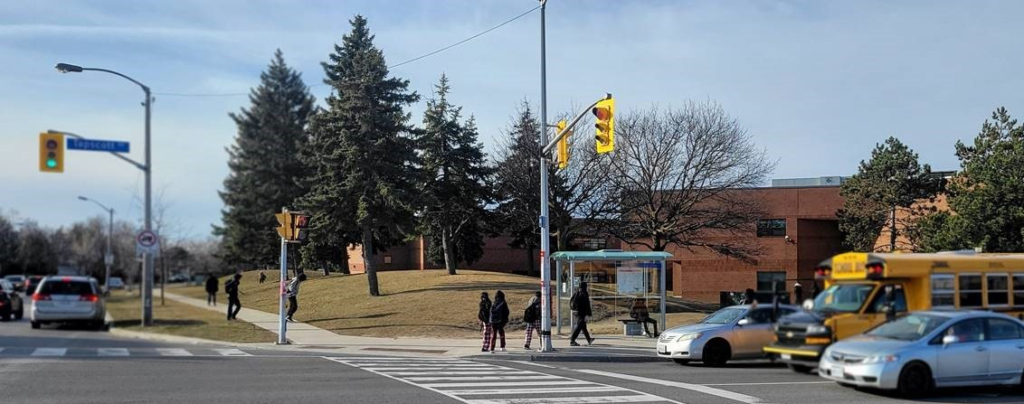
Malvern sits at the edge of Toronto, where its rural charm shines through with its trees, wooded ravines and green spaces still intact.
The reasonable property prices in Malvern have long been a draw for newcomers to Canada. The neighbourhood is a melting pot of over sixty cultures, with Afro Canadian, British, Chinese and East Indian communities making up the majority.
History Of Malvern, Toronto
The story of Malvern traces back to 1856, when the Malvern Post Office was established within David Brown’s store at the intersection of Finch Avenue and Markham Road. It was named after a town in England. To learn more about Malvern in the UK you can visit www.malvernbeacon.com.
A year later Senator David Reesor from Markham Village began selling “Village Lots” in Malvern envisioning it as the Capital of Scarborough ” counting on a railway connection by the Grand Trunk Railway. However when the railway started operations in 1871 it chose Agincourt over Malvern.
Even though Malvern missed out on becoming a railway hub it thrived as a community for more than a century. In the 1950s the Canada Mortgage and Housing Corporation acquired farms in Malvern to create a housing development known as a “model community.” The first residents settled into their homes in 1972.
On another note; The old Malvern Schoolhouse, constructed in 1872 still stands today at 5810 Finch Avenue. Serves as a school.
Lifestyle

Most of the shopping in Malvern is done at the Malvern Town Centre situated conveniently at Tapscott and Neilson Roads. This updated indoor shopping hub features a known supermarket and a discount department store as its attractions. The variety of shops consists of a balance between big name retail chains and locally owned stores.
Malvern, Toronto Parks & Facilities
The Malvern Recreation Centre, situated at 30 Sewells Road is a versatile facility housing an ice rink and sports fields. Additionally the Malvern Community Public Library is housed within this community hub boasting a collection of books and videos, in languages.
Over at Neilson Park off Neilson Road south of Finch Avenue stands the Neilson Park Fieldhouse, a structure dating back to the 1860s that has been lovingly restored. It now functions as a community centre offering meeting spaces, workshops and crafting programs. The park surrounding it features baseball diamonds, sports fields and lovely picnic spots. Not away is the McLevin Park/Scott Westney House on 180 McLevin Avenue, which hosts community programs and provides tennis court facilities for local residents.
Adjacent to this neighbourhood lies the Metro Toronto Zoo sprawling over 710 acres of parkland where more than 5,000 animals reside in their habitats. Just east of the zoo lies Rouge Park, known as one of North America’s parks. With over seven hundred varieties of plants and dense forests that’re home to various wildlife such, as deer, coyotes, foxes, raccoons, hawks, owls and numerous bird species.
Rouge Park is conveniently accessible, from the Pearse House Interpretive Centre situated off Meadowvale Road across from the Toronto Zoo. Finding enjoyment is a breeze with the abundance of parks and recreational facilities in this area. In Malvern you’ll discover parks with playgrounds for children, sports fields, swimming pools, ice skating rinks, waterfront access points and nature reserves. There are a total of 22 parks in this community offering 107 amenities. On average each park boasts around 4 facilities.
Malvern, Toronto Transit

Malvern offers a variety of public transportation options for its residents. Buses run along the streets as well as the interior roads within the neighbourhood. The Sheppard and Finch Avenue bus routes connect passengers to stops on the Yonge University Spadina subway line. Additionally north south routes such as Morningside Avenue, Neilson Road and Markham Road provide connections to Toronto and Scarborough transit lines as well as Go Transit bus and train services.
Major arterial roadways like Finch, Sheppard Morningside Avenues and Markham Road border Malvern offering access to parts of the city. Motorists can easily reach Highway 401 via on ramps located south of Sheppard Avenue by using Markham and Neilson Roads or Morningside Avenue.
With 268 transit stops in Malvern most residents rely on vehicles for their commute, within the city.
Malvern, Toronto Elementary, Secondary High Schools

Malvern boasts schools, specialized programs, for both elementary and secondary education. The neighbourhood is served by a total of 18 schools, 8 Catholic schools and 2 private schools. Local educational institutions provide a variety of programs such, as Advanced Placement, Fine Arts, French Immersion, Montessori, Islamic Studies and International Baccalaureate.
- Public Schools: 18
- Catholic Schools: 8
- Private Schools: 2
Public
- Malvern Junior Public School
- Lucy Maud Montgomery Public School
- Burrows Hall Junior Public School
- ÉÉ Laure-Rièse
- Académie Alexandre-Dumas
- Alexander Stirling Public School
- Tom Longboat Junior Public School
- ÉS Étienne-Brûlé
- Mary Shadd Public School
- Berner Trail Junior Public School
- Emily Carr Public School
- Grey Owl Junior Public School
- John G. Diefenbaker Public School
- Alvin Curling Public School
- Lester B. Pearson Collegiate Institute
- West Hill Collegiate Institute
- ÉS Ronald-Marion
- Dr Marion Hilliard Senior Public School
Catholic
- St. Mother Teresa Catholic Academy
- St. Barnabas Catholic School
- St. Gabriel Lalemant Catholic School
- ÉÉC Saint-Jean-de-Lalande
- St. Florence Catholic School
- St. Columba Catholic School
- ÉSC Père-Philippe-Lamarche
- Sacred Heart Catholic School
Private
- Malvern Montessori School
- Tayyibah Islamic Academy
Malvern, Toronto Homes
The residential properties in Malvern were constructed from the 1970s to the 1990s featuring a variety of housing options such as detached homes, townhouses, low rise garden apartments and high rise apartment buildings. Additionally there are housing communities in the area that offer affordable rents based on income.
This neighbourhood showcases a range of housing options. Has a stable population with about 32% of households relocating within the past five years and 10%, within the last year. It boasts a blend of both newer homes, predominantly occupied by homeowners.
